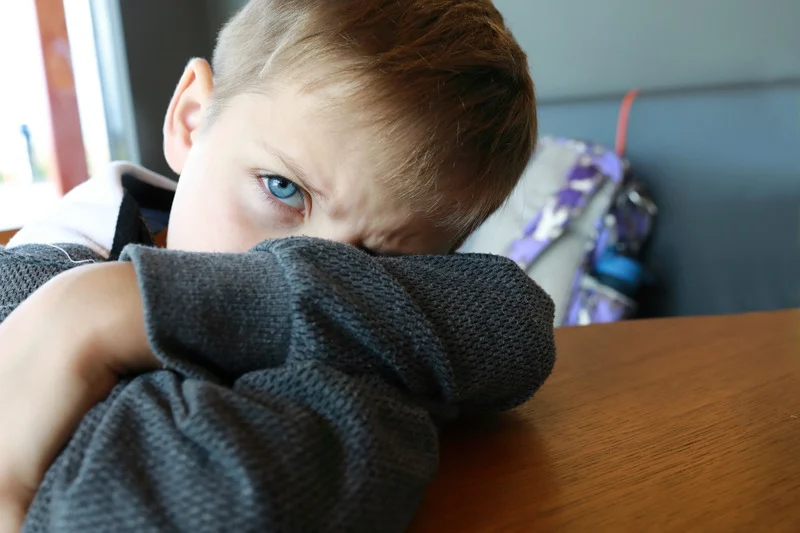This is part one of our series on learned helplessness. You can read part two here and part three here.
Finding the right balance between helping your child and hindering their growth is a fine line that we always seem to be balancing as caregivers and educators. However, one thing we often don’t consider is that if we do too much for them we could be robbing them of learning necessary life or executive function skills. Oftentimes, if we allow them to struggle we feel guilt, frustration or even impatience. But if we over-function for our children, this prevents them from getting the essential practice that it takes to develop control over their outcomes and in their lives. Over time this can lead to what psychologists refer to as learned helplessness. You can read all about learned helplessness (and strategies to overcome it at home and at school) in this three-part blog series!
Learned helplessness ‘exists when individuals believe that their own behavior has no influence on consequent events’ (Seligman, 1975).
Learned Helplessness Defined

In Helplessness: On Depression, Development, and Death, Martin Seligman described learned helplessness as something that “exists when individuals believe that their own behavior has no influence on consequent events”
At home when you ask your child to do something, is their first response or attitude, “I can’t do it”? Do you find yourself cleaning up after them because it is easier than arguing? Children who have developed learned helplessness might ask you to put their coat on or tie their shoes even though they know how. They might not take responsibility for remembering their homework, but expect you to drop everything and bring it to the school. Michelle Smith Lank, of Kids World Learning Center in Georgia, cautions us that, “Parents are teaching children their ability to not get things done and robbing them of gaining the skills and practice necessary to develop self-competence. After enough time, children don’t realize their true ability and potential. They begin to lack the tools needed to accomplish the tasks we are asking them to do.”At school, learned helplessness can show up through lack of self-confidence, poor problem-solving skills, attention issues, and feelings of hopelessness. For example, your student has a quiz on Friday so you offer to help them study the evening before. The first thing out of their mouth is, “I’m going to fail anyway, so why should I waste my time studying?” They feel defeated before they have even started. They do not see that any input on their part will change the outcome of their success. Another behavior is the waiting game. This is when you or the teacher is helping your student with their work and they stay silent until someone gives them the next step or the answer. Does your child wait for someone to point to a hint or give them the answer out of pity or impatience?
Learned helplessness can show up through lack of self-confidence, poor problem-solving skills, attention issues, and feelings of hopelessness.
Characteristics of Learned Helplessness

Some characteristics of learned helplessness, as identified by numberworksnwords.com, are:
- Low motivation to learn, and diminished aspirations to succeed in school.
- Low outcome expectations; that is, they believe that, no matter what they do in school, the outcome will always be negative (e.g. bad grades). In addition, they believe that they are powerless to prevent or overcome a negative outcome.
- Lack of perceived control over their own behavior and the environmental events; one’s own actions cannot lead to success.
- Lack of confidence in their skills and abilities (low self-efficacy expectations). These children believe that their school difficulties are caused by their own lack of ability and low intelligence, even when they have adequate ability and normal intelligence. They are convinced that they are unable to perform the required actions to achieve a positive outcome.
- They underestimate their performance when they do well in school, attributing success to luck or chance, e.g., “I was lucky that this test was easy.”
- They generalize from one failure situation or experience to other situations where control is possible. Because they expect failure all the time, regardless of their real skills and abilities, they underperform all the time.
- They focus on what they cannot do, rather than focusing on their strengths and skills.
- Because they feel incapable of implementing the necessary courses of action, they develop passivity and their school performance deteriorates.
Conclusion
It is never too late to develop skills to help educate and motivate our children to become the best versions of themselves that they can be—and improve ourselves in the process! In our next two blogs we will explore some of the strategies families can practice at home, and teachers can implement at school, to prevent and overcome learned helplessness.
About the Author

Dr. Sheila Murphy is the founder of Alma Bonita Animal Rescue and an educational consultant focused on equity, diversity, social emotional learning and inclusion. Sheila went into education specifically to advocate and address gaps in the system that failed her own three sons. With a Doctorate Degree in Educational Leadership, a Master’s Degree in Education, a Master’s Degree in Supervision and Administration and as a Certified Life Coach, Sheila has focused her life’s work on giving to those who are most vulnerable in this world.
Learn more about Dr. Sheila Murphy on her website.










